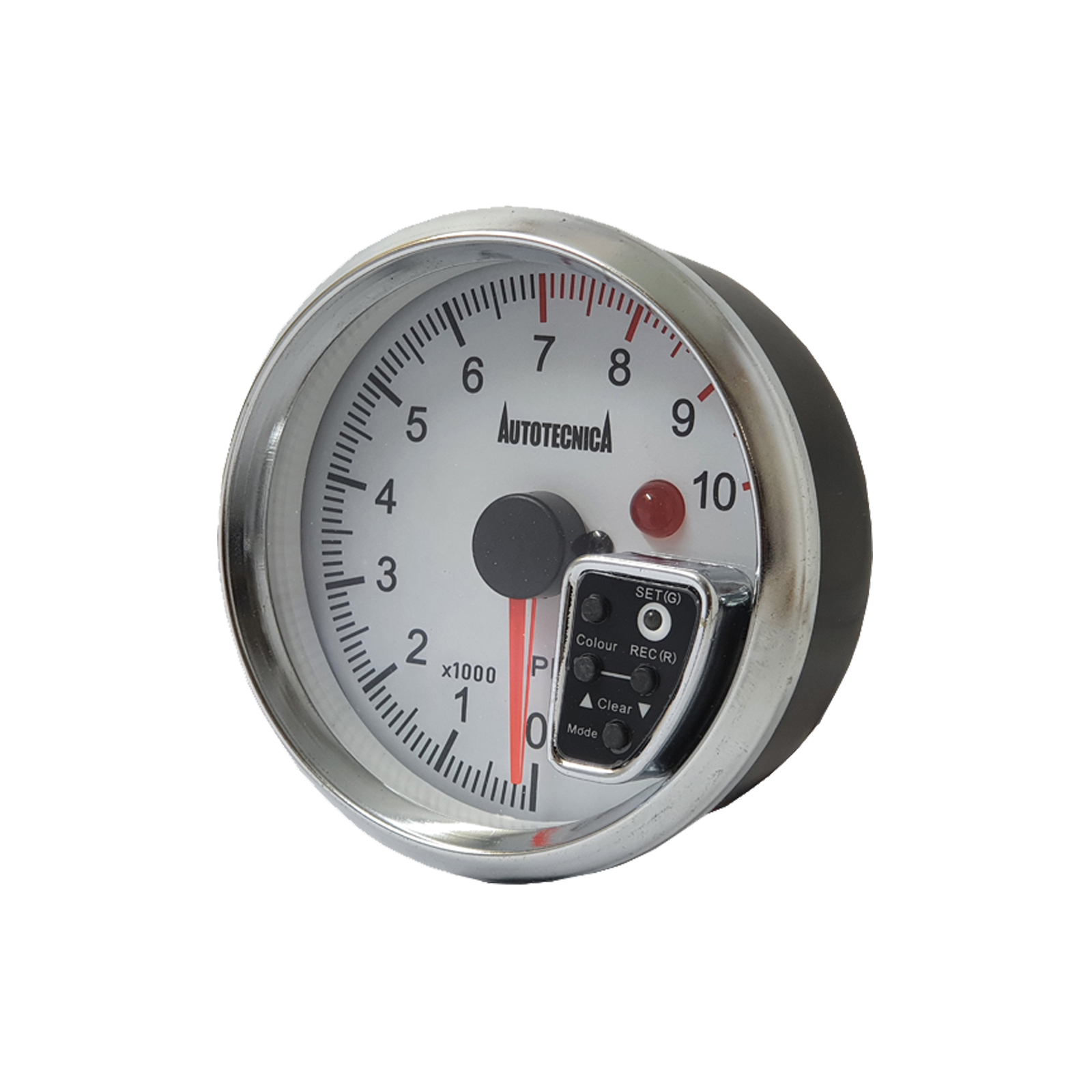Opening the Tricks of Tachometers: Whatever You Required to Understand About This Crucial Instrument in Your Lorry
Recognizing the complexities of tachometers can supply useful understandings right into your lorry's efficiency and maintenance needs. From gauging engine speed to analyzing the data it offers, tachometers act as an important tool for lorry proprietors and enthusiasts alike. By unraveling the enigmas behind this vital instrument, you can open a riches of details that can improve your driving experience and guarantee the longevity of your automobile.
Significance of Tachometers
The significance of tachometers hinges on their ability to give important real-time data concerning an engine's rotational speed, permitting accurate surveillance and maintenance of equipment. By measuring the changes per minute (RPM) of an engine's crankshaft, tachometers supply important insights into the engine's efficiency - tachometer. This data is essential for making certain that the engine operates within its optimum range, staying clear of prospective damages from over-revving or underperforming
Tachometers play an important duty in assisting drivers and specialists spot any abnormalities in the engine's speed, which can indicate concerns such as fuel inadequacy, mechanical issues, or too much stress on the engine. By without delay recognizing these problems through tachometer readings, upkeep can be performed proactively, protecting against expensive repairs and downtime in the lengthy run.
Additionally, tachometers are especially essential in high-performance lorries and machinery, where exact control over engine speed is needed for optimal procedure. Racing cars and trucks, airplane, and industrial devices count on tachometers to supply peak performance while preserving security criteria. In significance, tachometers are not just instruments for determining rate yet essential tools for making sure the smooth and reliable operation of engines across different applications.
Exactly How Tachometers Procedure Engine Rate
Utilizing sensing units that find the regularity of electrical pulses created by the engine's ignition system, tachometers properly measure the rotational rate of an engine. By monitoring the price at which these pulses are gotten, tachometers provide real-time responses on just how fast the engine's crankshaft is revolving per min, commonly described as transformations per minute (RPM)
The tachometer's sensing unit, commonly connected to the engine's ignition coil or trigger plug cables, picks up the electric signals produced each time a cyndrical tube fires. These signals are then exchanged RPM readings presented on the gauge or tool cluster within the vehicle driver's view. Tachometers can be analog or electronic, with contemporary vehicles frequently featuring electronic screens for specific and instantaneous RPM readings.
This details is important for vehicle drivers to recognize the engine's performance, protect against over-revving, optimize gear changing, and ensure effective gas consumption. By precisely gauging engine rate, tachometers play an important function in aiding chauffeurs run their lorries securely and successfully.
Interpreting Tachometer Readings
Having a clear understanding of exactly how tachometers gauge engine speed sets the structure for effectively interpreting the RPM analyses presented. Interpreting tachometer readings is critical for optimal car efficiency and engine wellness. RPM (Revolutions Per Minute) analyses on the tachometer show the speed at which the engine's crankshaft is revolving. When the engine is idling, the tachometer needle normally rests around 600-1000 RPM, depending on the automobile. As you increase, the RPM will boost, reflecting the engine's greater rotational rate. When shifting gears in a hands-on transmission automobile, the original source the RPM will drop as you engage the clutch and modification gears, then rise again as you accelerate in the new equipment. Monitoring the tachometer can help you determine the most reliable changing factors to make the most of fuel economy and engine power. Additionally, uncommon variations or continually high RPM analyses might indicate potential concerns with the engine that might need professional attention. By taking note of the tachometer analyses and comprehending how to interpret them, you can guarantee your automobile runs smoothly and successfully.


Tips for Making Use Of Tachometers Efficiently
To enhance driving performance and optimize engine efficiency, what secret strategies can be applied for efficiently utilizing tachometers? Tachometers are vital tools that provide real-time responses on engine speed, making it possible for vehicle drivers to make educated choices for better performance - tachometer. Right here are some tips for utilizing tachometers effectively:
Recognizing Optimum RPM Range: Familiarize yourself with the ideal RPM (Changes Per Min) range for your car. Keeping the engine within this variety can boost gas performance and prolong the engine's life expectancy.
Moving Gears at the Right Time: Utilize the tachometer to establish the ideal time to change equipments. Goal to change equipments when the RPM gets to the ideal variety for the following gear.
Keeping An Eye On Engine Anxiety: High RPMs for extended periods can strain the engine. Watch on the tachometer to avoid over-revving, specifically throughout velocity or when bring heavy loads.
Tachometers and Car Maintenance
When considering vehicle upkeep, tachometers play a crucial duty in checking engine efficiency and finding prospective problems. Tachometers give important data on engine rate, enabling chauffeurs and mechanics to make certain that the engine is running within the recommended RPM array. Consistently keeping an eye on the tachometer readings can aid recognize issues such as engine misfires, damaged ignition system, or problems with the gas shipment system. By taking notice of the tachometer, vehicle drivers can stop excessive pressure on the engine, which can result in costly repair services down the line.
In enhancement to detecting possible concerns, tachometers can additionally aid in optimizing gas efficiency. By keeping the engine rate within the optimum Click This Link variety, vehicle drivers can improve their gas mileage and minimize gas consumption. This not only profits the driver's purse however additionally adds to environmental preservation by decreasing harmful discharges.
Verdict
